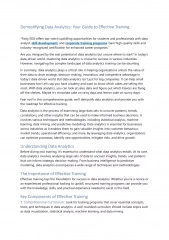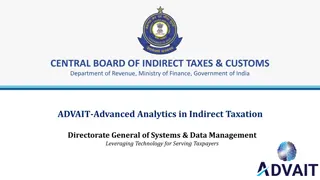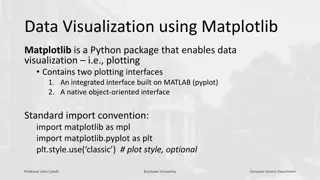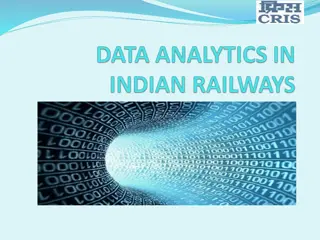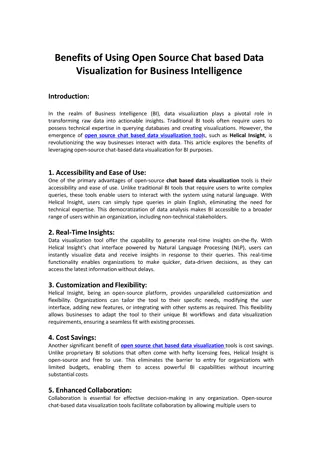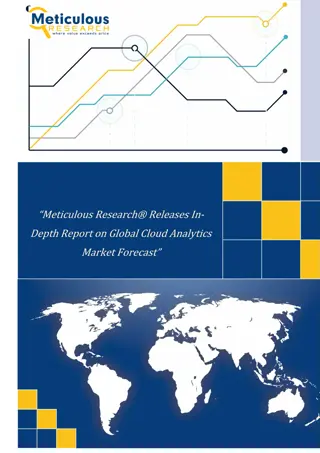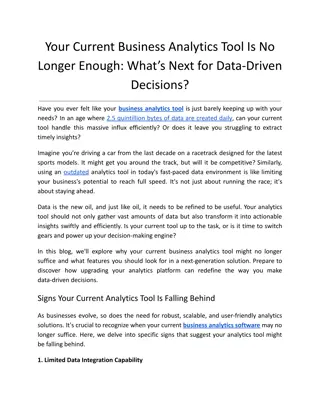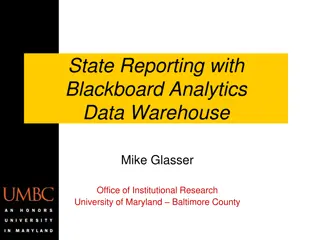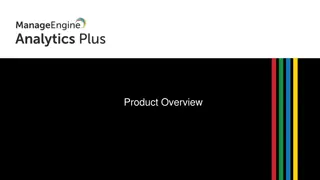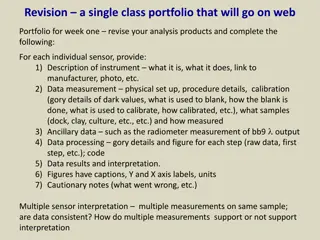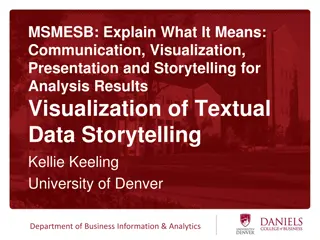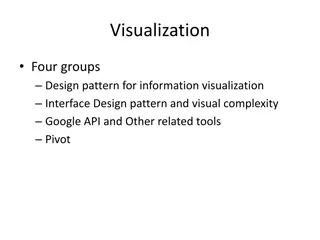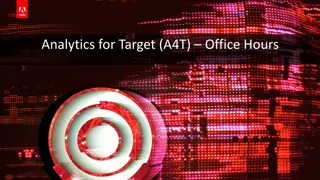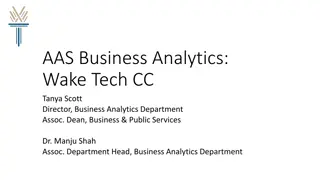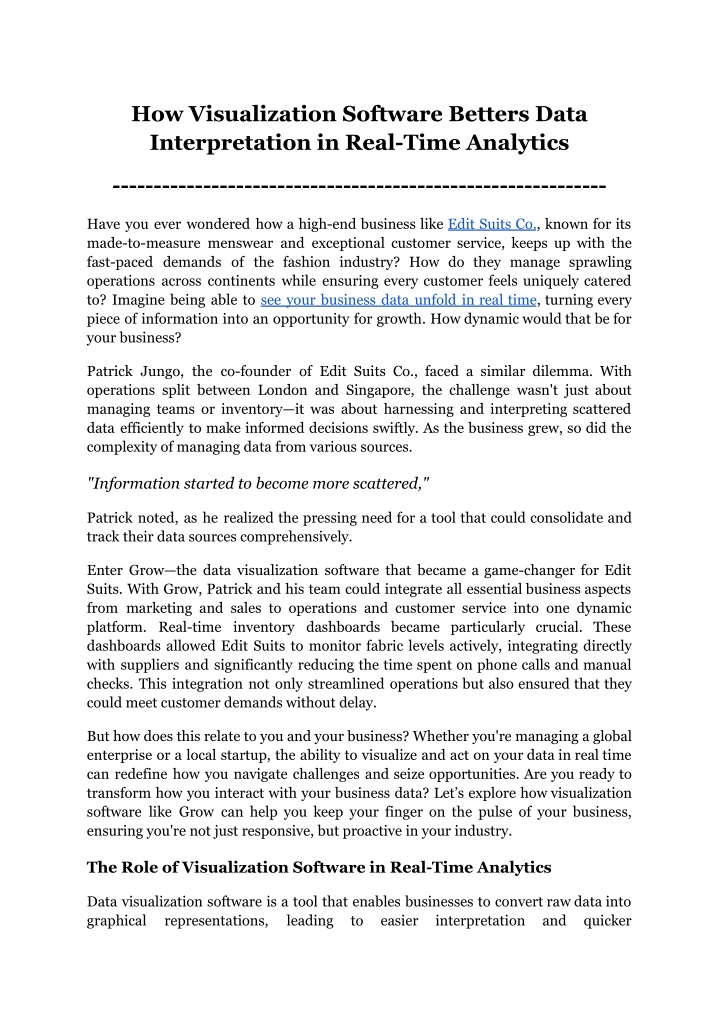
How Visualization Software Betters Data Interpretation in Real-Time Analytics
Join us to learn how you can leverage these powerful dashboard visualization tools to not just see data, but to understand and act on it with unprecedented speed and efficiency.
Download Presentation

Please find below an Image/Link to download the presentation.
The content on the website is provided AS IS for your information and personal use only. It may not be sold, licensed, or shared on other websites without obtaining consent from the author. If you encounter any issues during the download, it is possible that the publisher has removed the file from their server.
You are allowed to download the files provided on this website for personal or commercial use, subject to the condition that they are used lawfully. All files are the property of their respective owners.
The content on the website is provided AS IS for your information and personal use only. It may not be sold, licensed, or shared on other websites without obtaining consent from the author.
E N D
Presentation Transcript
How Visualization Software Betters Data Interpretation in Real-Time Analytics ------------------------------------------------------------ Have you ever wondered how a high-end business like Edit Suits Co., known for its made-to-measure menswear and exceptional customer service, keeps up with the fast-paced demands of the fashion industry? How do they manage sprawling operations across continents while ensuring every customer feels uniquely catered to? Imagine being able to see your business data unfold in real time, turning every piece of information into an opportunity for growth. How dynamic would that be for your business? Patrick Jungo, the co-founder of Edit Suits Co., faced a similar dilemma. With operations split between London and Singapore, the challenge wasn't just about managing teams or inventory it was about harnessing and interpreting scattered data efficiently to make informed decisions swiftly. As the business grew, so did the complexity of managing data from various sources. "Information started to become more scattered," Patrick noted, as he realized the pressing need for a tool that could consolidate and track their data sources comprehensively. Enter Grow the data visualization software that became a game-changer for Edit Suits. With Grow, Patrick and his team could integrate all essential business aspects from marketing and sales to operations and customer service into one dynamic platform. Real-time inventory dashboards became particularly crucial. These dashboards allowed Edit Suits to monitor fabric levels actively, integrating directly with suppliers and significantly reducing the time spent on phone calls and manual checks. This integration not only streamlined operations but also ensured that they could meet customer demands without delay. But how does this relate to you and your business? Whether you're managing a global enterprise or a local startup, the ability to visualize and act on your data in real time can redefine how you navigate challenges and seize opportunities. Are you ready to transform how you interact with your business data? Let s explore how visualization software like Grow can help you keep your finger on the pulse of your business, ensuring you're not just responsive, but proactive in your industry. The Role of Visualization Software in Real-Time Analytics Data visualization software is a tool that enables businesses to convert raw data into graphical representations, leading to easier interpretation and quicker
decision-making. At its core, it extracts data from various sources, processes it, and displays it in a visual context, such as graphs, charts, or maps. This type of software is crucial in real-time analytics because it allows businesses to see analytics visualized immediately as data flows in, enabling instant feedback and action. For business intelligence data visualization, these tools are not just about presenting data attractively; they are about making data comprehensible at a glance. The power of data visualization software lies in its ability to highlight trends, outliers, and patterns that might go unnoticed in raw numerical data. Moreover, with the growth in no-code data visualization platforms, these tools have become accessible to non-technical users, democratizing data and empowering a broader base within an organization to engage with analytics directly. Types of Data Visualizations Typically Used in Real-Time Scenarios In real-time analytics, certain types of visualizations are preferred due to their ability to update dynamically and display changes as they happen. Here are some of the most effective types: 1. Dynamic Dashboards: These are among the most common tools in business intelligence data visualization. Dynamic dashboards offer a real-time view of business metrics and performance indicators. They are highly customizable and can include a variety of widget-like components such as gauges, charts, and graphs that update continuously as new data arrives. Dashboard visualization is crucial for roles that require constant monitoring of systems, such as network operations centers or live digital marketing campaigns. 2. Interactive Charts: Unlike static charts, interactive charts allow users to manipulate the view of the data to better understand different aspects of the information presented. This might include zooming in on a specific time frame, or drilling down into the data to view more detailed subcategories. Interactive charts are particularly valuable in financial services for tracking market movements in real time. 3. Geospatial Maps: For industries like logistics or regional sales, geospatial maps provide real-time tracking of vehicles, goods, or sales performance across different regions. These visualizations are useful for optimizing routes in real time or responding to sales trends as they develop. 4. Heat Maps: Often used in website analytics and retail, heat maps show areas of intensity and can be updated in real time to reflect visitor behavior on a website or customer movements within a store. Each of these visualization types is supported by no-code data visualization platforms, which allow even non-technical users to create and customize real-time analytics tools without the need for programming skills. This democratization of data
tools extends the power of data insights across the organizational hierarchy with a more informed decision-making culture. Benefits Real-Time Data Analysis of Data Visualization Software in Immediate Data Comprehension Data visualization software revolutionizes how businesses interpret vast amounts of information by converting complex data sets into intuitive visual formats. This transformation is crucial in real-time data analysis, where the speed of understanding can directly influence operational success. Visualization software facilitates immediate comprehension in several ways: Visual Simplicity: Complex numerical data and metrics are simplified through visual means such as graphs, charts, and maps, making them accessible at a glance. This simplicity is crucial during high-pressure situations where time constraints do not allow for detailed analysis of raw data. Pattern Recognition: Humans are naturally visual creatures, and visualization aids in quickly identifying trends and anomalies. For instance, a sudden dip in a line graph can indicate performance issues that need immediate attention, while a spike might highlight unexpected successes or opportunities. Contextual Awareness: Good visualization provides context, essential for understanding the 'why' and 'how' behind data points. Dashboard visualization, a common feature in business intelligence data visualization platforms, integrates data from multiple sources into a single interface, offering a holistic view of operations. These capabilities, especially when enhanced by no-code data visualization platforms, enable not just data scientists but also non-technical business users to access, understand, and react to data promptly. Enhanced Decision-Making Real-time data visualization not only accelerates the comprehension of data but also enriches the decision-making process. Enhanced decision-making is observed in various scenarios, such as operational adjustments, strategic pivots, and crisis management, among others. Below are some examples where real-time data visualization has directly improved business decisions: Operational Efficiency: In manufacturing, real-time dashboard visualizations monitor assembly line performance, allowing managers to identify bottlenecks or malfunctions immediately. This quick identification
and resolution of issues prevent prolonged downtime and optimize production flow. Customer Interactions: Retail businesses use heat maps to track customer movements within stores. This real-time data helps adjust staffing and merchandising decisions on the fly, enhancing the customer experience and increasing sales. Financial Trading: In financial markets, traders use interactive charts to monitor live data streams of market conditions. The ability to visualize and analyze trends in real-time enables traders to make quicker, more informed trading decisions, potentially leading to significant financial gains. Emergency Response: Visualization tools aid emergency response teams by providing real-time geographic data visualization of incidents and resource deployment, improving response times and resource allocation. These examples demonstrate how real-time data visualization can transform decision-making processes, providing businesses with the agility to respond effectively to both opportunities and threats as they arise. Key Features of Effective Visualization Tools Real-Time Updating and Responsiveness The ability of data visualization software to update and respond in real-time is fundamental in today's fast-paced business environments. This feature ensures that the data displayed is not only current but also reflective of the very latest changes and inputs. The technical underpinnings that enable these capabilities include: Streaming Data Integration: Effective visualization tools are equipped with capabilities to handle streaming data. This allows the software to continuously receive and process data as it comes in, which is crucial for industries like finance and telecommunications where conditions change second by second. Performance Optimization: To manage large volumes of data updating in real-time, visualization software must be optimized for high performance. This involves advanced data caching, efficient data indexing, and the use of just-in-time data loading techniques to ensure that the visualization remains fluid and responsive without overwhelming system resources. Responsive Design: Visualization tools must display data correctly across different devices and platforms. This adaptability ensures that decision-makers can access insights on the go, using any device, without delays or distortions in data presentation. These features collectively ensure that business intelligence data visualization remains a reliable cornerstone for decisions that depend on the latest information.
Interactivity and User Control Interactivity in data visualization software allows users to engage with data more deeply by manipulating what they see to uncover different layers of analysis. Key aspects of interactivity and user control include: Drill-Down Capabilities: Users can click on visual elements to explore underlying data. For instance, clicking on a segment of a sales performance dashboard might reveal individual transaction details, allowing analysts to investigate anomalies or trends more thoroughly. Dynamic Filtering: This feature enables users to change the parameters of the data they are viewing. For example, a user could adjust a dashboard visualization to display data for a specific time period, region, or product category, enabling tailored analysis without needing to exit the interface. Customization Options: Effective tools offer extensive customization options, from changing visual types (e.g., from bar charts to scatter plots) to altering how data is grouped or summarized. No-code data visualization platforms particularly excel in this area, providing powerful customization without requiring users to write any code. These interactive features empower users to explore data from multiple angles and derive insights that are most relevant to their specific needs or questions. Integration Capabilities The ability to integrate seamlessly with existing data systems and workflows is crucial for any data visualization tool, ensuring that it acts as a natural extension of the business s analytical capabilities rather than as a standalone element. Integration capabilities include: Compatibility with Multiple Data Sources: Effective visualization tools can pull data from various sources, such as databases, cloud storage, and third-party applications. This is crucial for businesses that store data across different platforms. APIs and Embedding Features: Many advanced visualization platforms provide APIs that allow developers to integrate visualization features directly into existing systems or workflows. Similarly, embedding features let organizations place interactive visual dashboards within internal or customer-facing applications. Collaboration Features: Integration isn t just about data; it s also about people. Tools that support real-time collaboration enable teams to work together on data analysis tasks, share insights quickly, and make decisions more efficiently. Conclusion
In an era where data is continually generated and decisions need to be made at unprecedented speeds, visualization software has proven indispensable. By transforming complex data sets into clear, intuitive visual representations, such tools not only streamline the process of data interpretation but also significantly enhance the ability of organizations to respond to real-time challenges and opportunities. The use of data visualization software in real-time analytics allows businesses to not just keep pace with their data, but to lead with it, driving better decisions, faster actions, and ultimately, greater success. If you're looking to empower your business with these capabilities, consider exploring the solutions offered by Grow. With Grow's advanced data visualization tools, you can gain the clarity and insight needed to navigate your business through the complexities of today's data-driven landscape. Start with Grow s 14-day free trial to experience firsthand how effective and user-friendly these tools can be. Also, to make an informed decision, look up Grow Cost & Reviews on Capterra to see what other users are saying about their experiences.


